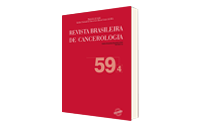Clinical and Epidemiological Analysis of 348 Cases of Prostate Adenocarcinoma Attended in a Cancer Care Center in Maranhão, Brazil
DOI:
https://doi.org/10.32635/2176-9745.RBC.2004v59n1.968Keywords:
Humans, Male, Prostatic Neoplasms, Adenocarcinoma, Epidemiologic Factors, BiopsyAbstract
Introduction: The prostate cancer is the main malignant neoplasm that occurs in men after nonmelanoma skin cancer. Clinical and epidemiological information on this pathology are scarce in Maranhão. Objectives: Analysis of clinical and epidemiological information of patients diagnosed with prostate cancer, in a Cancer Care Reference Center in Maranhão, between january 2008 and december 2009. Method: This is a retrospective and descriptive study in which 348 medical records of patients diagnosed with prostate cancer, at the Instituto Maranhense de Oncologia Aldenora Bello, were surveyed. The variables under consideration were: age, origin, occupation, initial prostate-specific antigen, Gleason score of the biopsy, Gleason score of the surgical specimen (in patients whose treatment included radical prostatectomy or transurethral resection of the prostate), and treatment. Results: The most affected age group was from 71 to 80 years old (39.7%). Most of patients were from Sao Luis – MA (64.1%) and did not have occupation (55.2%). Most of patients (32.8%) had prostate-specific antigen between 4.1 and 10 ng/ml. The Biopsy Gleason revealed moderate to weakly differentiated tumors in 48.5% of the cases. The predominant therapy was clinical treatment and/or subcapsular bilateral orquiectomy. Conclusion: This study demonstrated a significant association between the prostate-specific antigen and the age and Gleason Score, revealing in these patients a greater tendency to increase their levels the greater the age and higher histologic grading of tumors. A percentage of 36.5% of patients had both Biopsy and Surgery Specimen Gleason Scores equivalents.









